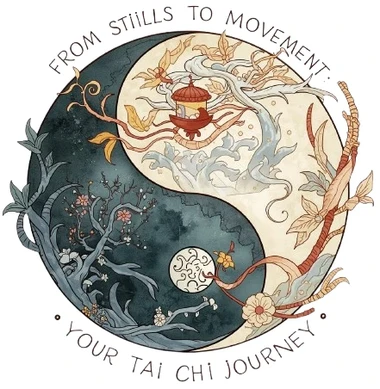From Silence to Movement: Why Celebrities Turn to Tai Chi
Tai Chi celebrities fascinate us because they’re living proof that even the most powerful people crave balance. Imagine Mel Gibson stepping off a noisy set, closing his eyes, and sinking into the quiet flow of Tai Chi. Or picture Michelle Obama in Beijing, moving gracefully with a group of students during her China visit. It’s not a movie scene—it’s real life.
I want to start with a question: if stars who seem to “have it all” still seek out Tai Chi, what does that say about its power?
At Taichi Wuji, we hold to a simple philosophy: from Wuji (silence, stillness) to Taiji (harmony in motion). This is the same path many famous people practice. They begin with stress, noise, or chaos, and discover calm, focus, and creativity through movement.
Let me break it down for you:
- Problem: Celebrities, leaders, and artists live in the spotlight. That means stress, pressure, and constant judgment.
- Agitate: You’d think success cures stress, but in reality it multiplies it. Fame brings chaos, not peace.
- Solution: Tai Chi is their “reset button.” It’s not just martial arts; it’s therapy in motion.
- Transformation: They regain clarity, balance, and even a fresh kind of creativity.
- Action: And you? You can start your own journey—from Wuji to Taiji—just like them.
That’s why this blog isn’t just a list. It’s a guided tour through 15 stories of famous people practicing Tai Chi. Each one shows a different face of stillness: warrior, leader, healer, creator.
Eastern Legends: Asian Icons Who Carry the Tai Chi Flame
When we talk about martial arts icons in Tai Chi, it’s impossible not to start in the East. These legends didn’t just practice Tai Chi—they shaped how the world sees it.
Jet Li & Bruce Lee: Masters of Zen and Flow
Let’s start with the obvious powerhouse: Jet Li. Many fans know him for explosive kung fu roles, but fewer realize he co-founded Jet Li Tai Chi Zen, a movement blending digital wellness and traditional philosophy. For him, Tai Chi isn’t about fights on screen—it’s about cultivating a calm mind in a fast digital age.
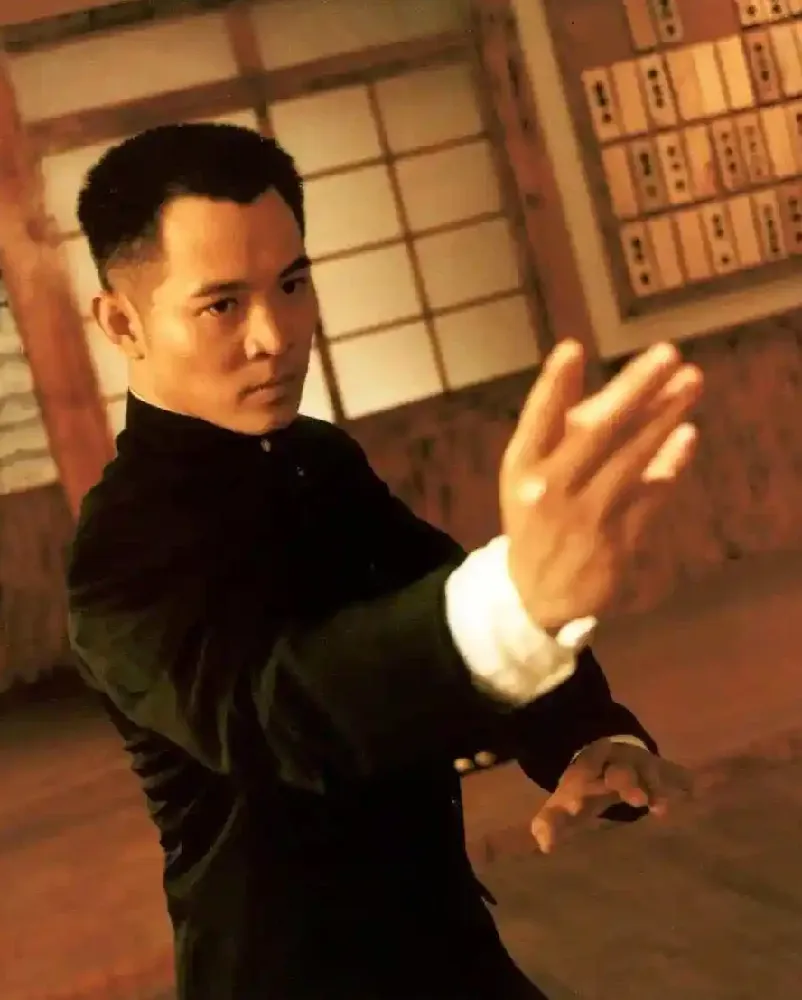
His story is a reminder: the quiet practice is sometimes more powerful than the biggest blockbuster.
Now, Bruce Lee is trickier. He wasn’t strictly a Tai Chi master, but he grew up with exposure to the art through his family. His father practiced it, and Bruce absorbed those roots before building his own Jeet Kune Do. If Jet Li shows us modern adaptation, Bruce Lee shows us how even fragments of Tai Chi can ripple across martial arts history.
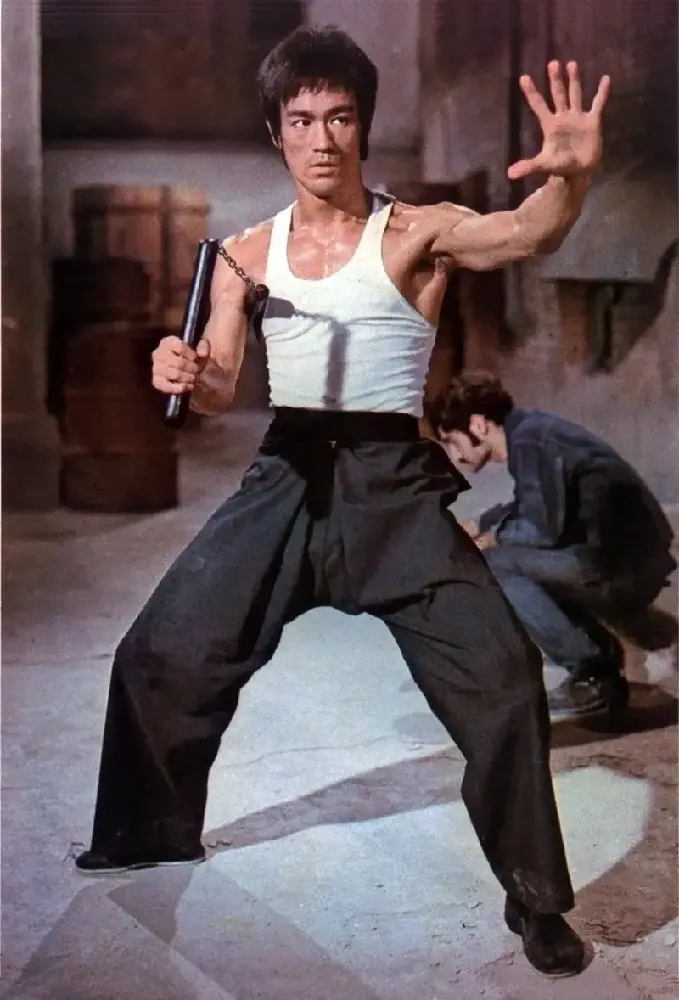
Exclusive tip: Don’t chase speed right away. Jet Li often reminds students to slow down first. Paradoxically, moving slower makes you stronger.
Jack Ma & Wu Jing: Business Meets Martial Spirit
It surprises people to hear that Jack Ma, the founder of Alibaba, is also a Tai Chi devotee. He talks openly about Jack Ma Tai Chi business wisdom—using softness to manage conflict, balance to manage teams. For him, Tai Chi is strategy. Instead of clashing head-on, he redirects energy.
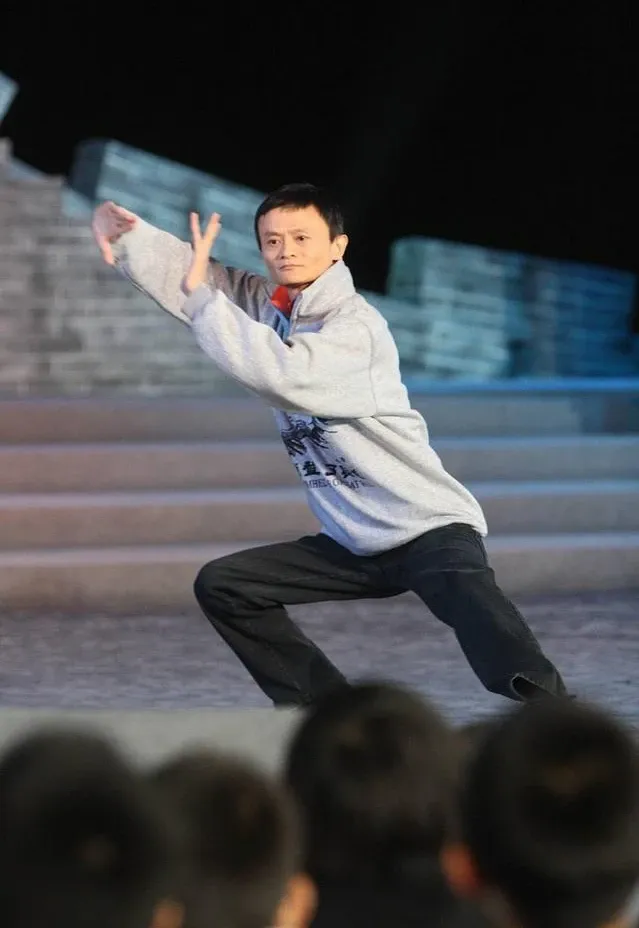
Then there’s Wu Jing, the action star known for Wolf Warrior. His training in Tai Chi gave him more than fight choreography. He often describes it as a way to align his breath with his roles. It’s like method acting, but instead of losing control, he gains it through breath.
What unites them? Both see Tai Chi not just as exercise, but as leverage—whether in boardrooms or battle scenes.
Exclusive tip: Next time you face conflict, don’t rush into resistance. Step aside, redirect, and let energy flow past you. That’s classic Tai Chi strategy.
Zhao Wenzhuo & Mao Zedong: Tradition and Power
Zhao Wenzhuo, another martial artist, is sometimes overshadowed by Jet Li. But his dedication to Tai Chi is personal. He views it as carrying on Chinese culture. In interviews, he often says Tai Chi isn’t just “old people in the park.” It’s living heritage.
And then, the surprising figure: Mao Zedong. Yes, China’s former leader practiced Tai Chi. For him, it was partly health, partly symbolism—connecting political vision to cultural tradition. While controversial as a leader, his adoption of Tai Chi shows how deeply it penetrated even the highest levels of power.
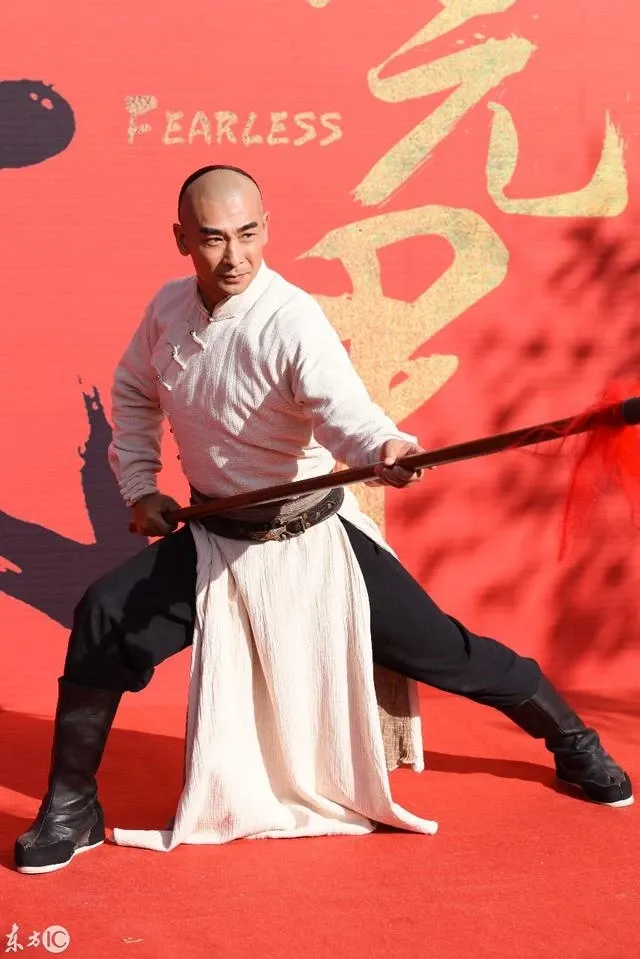
Exclusive tip: Zhao once shared that the simplest form—the basic standing pose—is also the hardest. Try standing still, arms relaxed, breathing slow. Sounds easy? It isn’t.
Western Glow: Why Hollywood and Global Leaders Practice Tai Chi
So why are famous people practicing Tai Chi in the West? Because stress and fame don’t mix well. In Hollywood, pressure ages people quickly. In politics, it drains leaders. Tai Chi is their survival tool.
Mel Gibson & Ozzy Osbourne: Rebels Finding Peace
You don’t picture Mel Gibson moving slowly in a park, right? Yet he credits Tai Chi with giving him a way to calm his racing mind. On set, he reportedly uses Tai Chi breathing before explosive scenes to ground himself. It’s his personal off-switch.
Now, let’s flip the script: Ozzy Osbourne, the Prince of Darkness. Years of rock lifestyle took a toll. But Ozzy discovered Tai Chi for health. In interviews, he laughs about how strange it felt at first. But soon, the slow, mindful movements helped rebuild his balance and even reduce pain.
What’s wild is this: two men known for chaos—one on screen, one on stage—both found peace in the same slow art.
Exclusive tip: If you’re restless, don’t fight it. Start Tai Chi with micro-sessions: two minutes of slow breathing with movement. That’s how Ozzy began.
Gisele Bündchen & David Beckham: Balance Beyond Glamour
Supermodel Gisele Bündchen is famous for her wellness lifestyle. She calls Gisele Bündchen Tai Chi wellness one of her grounding rituals, especially during travel. For her, it’s a moving meditation.
Soccer legend David Beckham also turned to Tai Chi after intense training years. He credits it with keeping his focus sharp, even post-career. Instead of chasing adrenaline, he now values the quiet repetition of form.
These stories matter because they show us Tai Chi isn’t a “retirement sport.” It’s a performance enhancer—whether on a runway or a football field.
Exclusive tip: Don’t think of Tai Chi as replacing your sport or workout. Think of it as an amplifier. Add 10 minutes before your run or match, and see the difference in focus.
Michelle Obama & Justin Trudeau: Tai Chi on the World Stage
In 2014, Michelle Obama visited China and joined a Tai Chi class. The photos went viral. She wasn’t just posing. She genuinely flowed with the group, and many saw it as symbolic—America meeting China in harmony. That’s why the phrase Michelle Obama Tai Chi China visit still trends.
Similarly, Justin Trudeau, Canada’s Prime Minister, has been photographed and reported engaging in Tai Chi exchanges. For him, it’s part cultural diplomacy, part personal interest. He once described it as a bridge between East and West.
What’s striking is this: when leaders step into Tai Chi, it’s not just for health. It becomes political symbolism—an embodied handshake.
Exclusive tip: Next time you feel disconnected in a group, try synchronized Tai Chi with others. Moving together dissolves walls faster than words.
History Echoes: When Leaders Turn to Tai Chi for Wisdom
Here’s something I love about Tai Chi celebrities: they’re not just actors or athletes. Sometimes, they’re world leaders. People who carry the weight of nations also turn to this gentle martial art.
Why? Because leadership is heavy. Imagine waking up every day knowing millions depend on your decisions. Stress isn’t just an emotion at that level—it’s a shadow that never leaves.
Jimmy Carter & Ho Chi Minh: Healing Through Stillness
Let’s start with Jimmy Carter. After his presidency, he focused on humanitarian work. But privately, Carter also sought practices to sustain his health. Friends and reports point out that he included Tai Chi in his routines as a way to support recovery and energy. Picture him—once the busiest man in the world—moving slowly in a quiet garden.
Across the globe, Ho Chi Minh embraced Tai Chi decades earlier. For him, it wasn’t luxury wellness. It was survival. Living through war and revolution, he leaned on practices like Tai Chi and qigong to steady his body and mind.
What do these two figures have in common? Different ideologies, different continents, but one shared truth: when the noise of politics is deafening, stillness is the only medicine.
Exclusive tip: If you’re exhausted after a stressful project, don’t push harder. Try five minutes of slow arm circles with deep breathing. Carter swore by gentle motion over strain.
Prince Charles: A Royal Curiosity
Now, let’s talk royalty. Prince Charles (now King Charles III) has always been interested in alternative health practices. Tai Chi caught his attention as part of his exploration into Eastern healing traditions. He’s not a master, but his curiosity helped normalize it among Western elites.
In the 90s, newspapers poked fun at him. But look where we are now: Tai Chi is mainstream wellness. Leaders like Charles played a quiet role in planting that seed.
Exclusive tip: If you’re new, start curious like Charles. Don’t worry about mastering moves. Begin with the mindset of “exploring,” not “achieving.”
Why Do So Many Famous People Practice Tai Chi?
By now, you’ve noticed the pattern. From Jet Li to Gisele Bündchen, from Carter to Michelle Obama, famous people practicing Tai Chi keep showing up across industries.
But what’s behind it? Here are the three big reasons:
- Stress relief – Fame is heavy. Tai Chi is light. That balance keeps them sane.
- Creative focus – Musicians, actors, writers—they all need clarity. Tai Chi clears the mental clutter.
- Longevity – Tai Chi isn’t just exercise. Studies show it supports joint health, heart function, and even brain power.
If you think about it, these are universal needs. You don’t have to be a celebrity to want less stress, more focus, or better health.
Exclusive tip: Keep it simple. Start with breathing. Inhale for 4 counts, exhale for 6. That rhythm alone is half of Tai Chi’s magic.
Wuji to Taiji: The Journey Celebrities Show Us
Here’s where Taichi Wuji comes in. At our core, we believe Tai Chi is more than movement. It’s a journey: from Wuji (the still void) to Taiji (dynamic harmony).
What makes celebrity stories powerful is how they mirror this journey.
- Wuji: They begin in silence, often forced by burnout, illness, or stress. Think Ozzy Osbourne’s shaky balance.
- Taiji: Through movement, they discover new strength. Think Jet Li’s graceful flow in Tai Chi Zen.
And here’s the kicker: this isn’t unique to stars. It’s the same for you, me, anyone.
Exclusive tip: When you feel stuck, remember Wuji is not emptiness to fear. It’s the pause before creation. Celebrities who thrive in Tai Chi learn to love that pause.
The Misunderstood Side of Tai Chi
Quick confession: for years, I thought Tai Chi was “old people in the park.” Maybe you’ve thought that too. Slow, boring, irrelevant.
But here’s the truth celebrities already know: slow doesn’t mean weak. In fact, slowness reveals strength. Think about it. Holding a plank slowly burns more than rushing through pushups.
That’s why celebrity Tai Chi routines are secret weapons. They look calm on the surface, but inside they’re rewiring energy, muscles, and focus.
Exclusive tip: If you’re embarrassed to try Tai Chi, remember: so was Ozzy Osbourne. If the Prince of Darkness can laugh through it, so can you.
Breaking the Cliché: Tai Chi Is Not Just Martial Arts
Another myth? That Tai Chi is purely a martial art. Yes, it is combat-rooted. But watch how Jack Ma Tai Chi business wisdom works. He applies the principle of yielding in boardroom battles.
Or consider Gisele Bündchen Tai Chi wellness. She uses it as meditation, not fighting.
Celebrities help us see Tai Chi differently. It’s martial, yes. But it’s also philosophy, therapy, creativity, diplomacy.
Exclusive tip: Take one Tai Chi principle—like “yielding beats force”—and apply it outside practice. Next time you argue with a friend, listen more than push. See what shifts.
15 Celebrities' Tai Chi Journeys: A Wuji-to-Taiji Snapshot
To make these stories stick, here's a quick-reference table of our 15 Tai Chi trailblazers—proving the path from silence to movement is universal.
| Celebrity | Profession/Role | Tai Chi Influence/Style | Key Benefit/Quote | Wuji to Taiji Insight |
|---|---|---|---|---|
| Eastern Legends | ||||
| Jet Li | Action Star, Philanthropist | Taiji Zen founder; blends with digital wellness | "Slow to go fast" – cultivates calm in chaos | From digital burnout (Wuji) to flowing projects (Taiji) |
| Bruce Lee | Martial Arts Icon | Early family exposure; roots in Jeet Kune Do | Absorbed fluid principles for adaptability | From rigid forms (Wuji) to hybrid innovation (Taiji) |
| Jack Ma | Alibaba Founder | Yang-style; business strategy integration | "Yielding overcomes force" for leadership | From market conflicts (Wuji) to balanced empires (Taiji) |
| Wu Jing | Action Director/Actor | Chen-style training for films like Wolf Warrior | Aligns breath with intense roles | From chaotic sets (Wuji) to controlled power (Taiji) |
| Zhao Wenzhuo | Martial Artist/Actor | Chen-style mastery; starred in Tai Chi series | "Living heritage, not just park exercise" | From cultural roots (Wuji) to dynamic expression (Taiji) |
| Mao Zedong | Historical Leader | Promoted for national fitness in 1960s | Emphasized health in directives | From political voids (Wuji) to unified vitality (Taiji) |
| Western Glow | ||||
| Mel Gibson | Director/Actor | Qigong-infused practice; black belt level | "Peaceful fighting steps" for set stress | From Hollywood frenzy (Wuji) to grounded creativity (Taiji) |
| Ozzy Osbourne | Rock Legend | Daily for Parkinson's management (2023) | "Helps rebuild balance after wild years" | From health shadows (Wuji) to resilient rhythm (Taiji) |
| Gisele Bündchen | Supermodel | Moving meditation with yoga/kung fu | Grounding ritual during travel/pregnancy | From runway rush (Wuji) to effortless poise (Taiji) |
| David Beckham | Soccer Icon | AIA campaign sessions for focus | Sharpens mental edge post-career | From game adrenaline (Wuji) to sustained harmony (Taiji) |
| Michelle Obama | Former First Lady | 2014 Chengdu school session | "Beautiful form bridging cultures" | From global divides (Wuji) to shared unity (Taiji) |
| Justin Trudeau | Canadian PM | 2016 Shanghai cultural exchanges | "Bridge between East and West" | From diplomatic tensions (Wuji) to flowing alliances (Taiji) |
| History Echoes | ||||
| Jimmy Carter | Former US President | Post-presidency routines with wife | Supports recovery and energy | From leadership weight (Wuji) to gentle healing (Taiji) |
| Ho Chi Minh | Vietnamese Leader | 1950s intro for wartime morale/health | Steadying body/mind amid revolution | From war voids (Wuji) to enduring strength (Taiji) |
| Prince Charles | UK Royalty | Explored in 90s/2000s wellness talks | Normalizes Eastern healing for elites | From royal scrutiny (Wuji) to curious exploration (Taiji) |
Spot a pattern? Every journey starts in Wuji's pause. Which row resonates with you? Comment below!
Everyday Lessons from Celebrity Tai Chi
Let’s make this real. You don’t need a movie set, a stage, or a palace to apply these lessons.
- Feeling stressed? Try Michelle Obama’s approach: join a group and move together. Collective energy heals.
- Need focus? Think Beckham. A short Tai Chi warm-up sharpens performance.
- Seeking health recovery? Follow Ozzy’s small steps. Micro-practice is better than none.
- Want creativity? Channel Jet Li. Slow down before you speed up.
The point is, these celebrity Tai Chi routines aren’t far from reach. They’re just ordinary moves made extraordinary by consistency.
Exclusive tip: Don’t overcommit. Choose one lesson from above and test it for a week. Simple beats perfect.
So, What Do Celebrity Tai Chi Routines Really Teach Us?
At this point, we’ve walked through stories of Tai Chi celebrities—from Jet Li to Michelle Obama, from Ozzy Osbourne to Prince Charles. The question is: what ties all these people together?
Here’s the thread: they didn’t come to Tai Chi because they wanted fame. They already had that. They came because they needed balance.
And that’s the secret most of us miss. Celebrities practice Tai Chi for the same reason you and I should—because life is noisy, heavy, and often overwhelming. Tai Chi offers a reset.
Exclusive tip: Don’t wait for a breaking point. Begin when life is “okay.” That way, Tai Chi becomes maintenance, not just repair.
Common Misconceptions About Tai Chi (And Why Celebrities Prove Them Wrong)
Let’s clear the air. I hear these myths all the time:
- “Tai Chi is too slow to be real exercise.”
→ Ask Beckham if his focus sharpened after sessions. He’ll say yes. - “It’s only for old people.”
→ Gisele Bündchen swears by it for wellness at the peak of her career. - “It’s outdated.”
→ Jack Ma builds entire business talks around Tai Chi philosophy. - “It’s not for leaders.”
→ Michelle Obama and Trudeau literally used it as cultural bridges.
See the point? Famous people practicing Tai Chi smash these stereotypes. They remind us Tai Chi is timeless, not tired.
Exclusive tip: Next time someone laughs at Tai Chi, flip it back: “If Ozzy Osbourne can do it, why can’t I?”
The Philosophy You Can Borrow Today
The beauty of Tai Chi isn’t the choreography. It’s the philosophy. At Taichi Wuji, we summarize it as:
- Wuji – the pause, silence, potential.
- Taiji – the movement, harmony, creation.
Every story we’ve explored is really this journey in disguise.
- Jet Li: Wuji (digital burnout) → Taiji (Tai Chi Zen project).
- Jack Ma: Wuji (conflict in business) → Taiji (soft power in management).
- Ozzy Osbourne: Wuji (fragile health) → Taiji (slow healing through motion).
- Michelle Obama: Wuji (political divide) → Taiji (cultural unity through Tai Chi).
And you? Where’s your Wuji? Stress at work? Distraction at home? That pause is your entry point.
Exclusive tip: Journal tonight. Write down where you feel “void” in life. That’s your Wuji. Then pick one Tai Chi-inspired action to bring harmony.
Your Next Step: From Reading to Moving
I’ve shared celebrity stories, myths, and philosophy. But here’s the catch: reading won’t change you. Moving will.
At Taichi Wuji, we believe action is the bridge. We teach not just forms, but how to live the philosophy: patience, softness, flow. Whether you’re chasing creativity, healing, or leadership, Tai Chi offers a roadmap.
Here’s what you can do right now:
- Pick your why. Stress, focus, wellness, connection—what do you want from Tai Chi?
- Choose one practice. Start with breathing, or one form, or even just standing still.
- Stay consistent. Remember Ozzy—two minutes a day grew into routine.
- Share your story. Like Michelle Obama did, invite others to join you.
Exclusive tip: Anchor your practice. Tie Tai Chi to something you already do—morning coffee, evening walk. Habit grows when it’s connected.
A Gentle Invitation
So, which story hit you hardest? Was it Jet Li’s calm, Jack Ma’s business wisdom, or Michelle Obama’s graceful diplomacy? Maybe Ozzy Osbourne’s recovery?
Whoever it was, remember this: if they found value in Tai Chi, so can you.
I invite you to join us at Taichi Wuji. Start your own journey from silence to movement, from Wuji to Taiji. Explore classes, resources, and stories that can guide you, just as Tai Chi guided these celebrities.
You don’t need fame to practice Tai Chi. You just need curiosity—and a willingness to slow down.
Final encouragement: In a world obsessed with speed, Tai Chi is rebellion. Celebrities know it. Now it’s your turn.
FAQ: Celebrities and Tai Chi
Who are the most famous Tai Chi celebrities?
Some of the most recognized famous people practicing Tai Chi include Jet Li, Jack Ma, Michelle Obama, David Beckham, and Gisele Bündchen. Each of them uses Tai Chi for different reasons—health, creativity, leadership, or cultural connection.
Why do famous people practice Tai Chi?
Celebrities turn to Tai Chi because it relieves stress, improves focus, and supports long-term wellness. For example, Ozzy Osbourne uses Tai Chi for recovery, while Jack Ma applies Tai Chi business wisdom to leadership.
What are some typical celebrity Tai Chi routines?
Most celebrity Tai Chi routines start with simple breathing, standing meditation, and slow-motion movements. Jet Li teaches through Tai Chi Zen, while Michelle Obama joined public routines during her China visit.
What are the benefits of Tai Chi for stars?
The biggest benefits include: Stress relief under constant public attention Stronger body-mind connection Recovery from injuries or health issues Sharper mental focus for performances Longevity and graceful aging This is why Tai Chi appeals equally to actors, leaders, and athletes.
Are there any martial arts icons in Tai Chi?
Yes. Icons like Jet Li, Bruce Lee, Wu Jing, and Zhao Wenzhuo are connected with Tai Chi practice. Their journeys show how Tai Chi shapes martial artists not only in combat but also in philosophy.
How does Tai Chi philosophy help leaders?
Leaders like Jack Ma, Prince Charles, and even Mao Zedong saw Tai Chi as more than exercise. The principle of “softness overcomes hardness” helps in diplomacy, business negotiation, and personal balance. This is sometimes described as the Tai Chi philosophy for leaders.
What does the Wuji to Taiji journey mean?
“Wuji” represents stillness and silence. “Taiji” represents harmony in motion. Celebrities like Jet Li embody this path: starting from stress or emptiness, they discover flow and creativity through Tai Chi. At Taichi Wuji, this is the heart of our teaching.
Did Jet Li really create Tai Chi Zen?
Yes. Jet Li Tai Chi Zen is his wellness brand that combines Tai Chi philosophy with modern technology. It reflects his belief that Tai Chi is not just martial arts but a lifestyle for the digital age.
What is Jack Ma Tai Chi business wisdom?
Jack Ma often explains how he applies Tai Chi principles to business. Instead of direct conflict, he believes in yielding, redirecting, and balancing energy. This philosophy helped him build Alibaba into a global company.
Did Michelle Obama practice Tai Chi during her China visit?
Yes. In 2014, photos and videos showed the First Lady joining a Tai Chi class in Beijing. Her graceful participation became a cultural symbol of harmony between the U.S. and China.
How does Gisele Bündchen use Tai Chi for wellness?
The supermodel includes Gisele Bündchen Tai Chi wellness routines in her lifestyle. For her, Tai Chi is a moving meditation that balances stress from travel and work.
Does Ozzy Osbourne practice Tai Chi for health?
Yes. After years of health struggles, Ozzy turned to Tai Chi as a gentle way to improve balance and reduce pain. His story proves that even rock stars benefit from slow, mindful movement.
Is Tai Chi just for older people, or can young celebrities practice it too?
While older generations use Tai Chi for health, younger stars like Wu Jing and Naomi Campbell also practice it. Tai Chi is versatile—athletes use it for focus, leaders for calm, and artists for creativity.
Can Tai Chi really help with creativity?
Yes. Many celebrity Tai Chi routines show that slowing down boosts creativity. Jet Li finds inspiration in silence; Beckham regains focus for sports; Gisele uses it to reset her mind.
How can I start my own Tai Chi Wuji journey?
Begin with simple steps: Find a quiet place to practice Start with breathing exercises Learn one or two basic Tai Chi forms Stay consistent with daily practice Explore online or in-person classes at Taichi Wuji Like the celebrities, you’ll discover your own journey from Wuji to Taiji.
